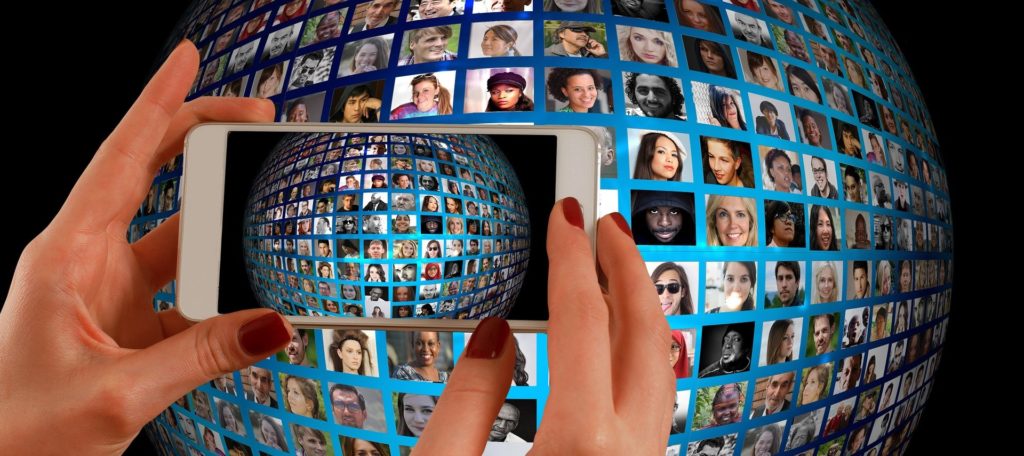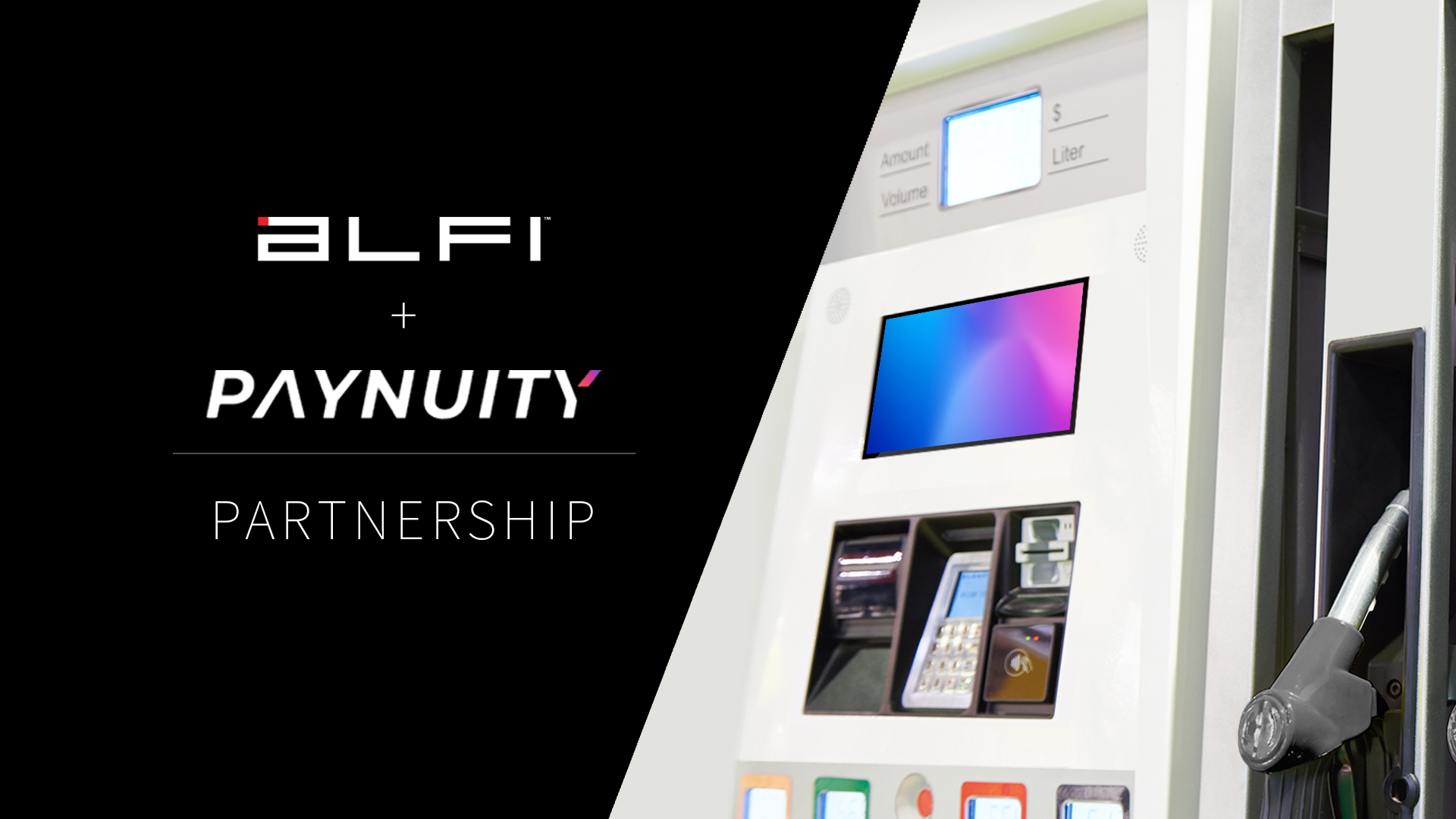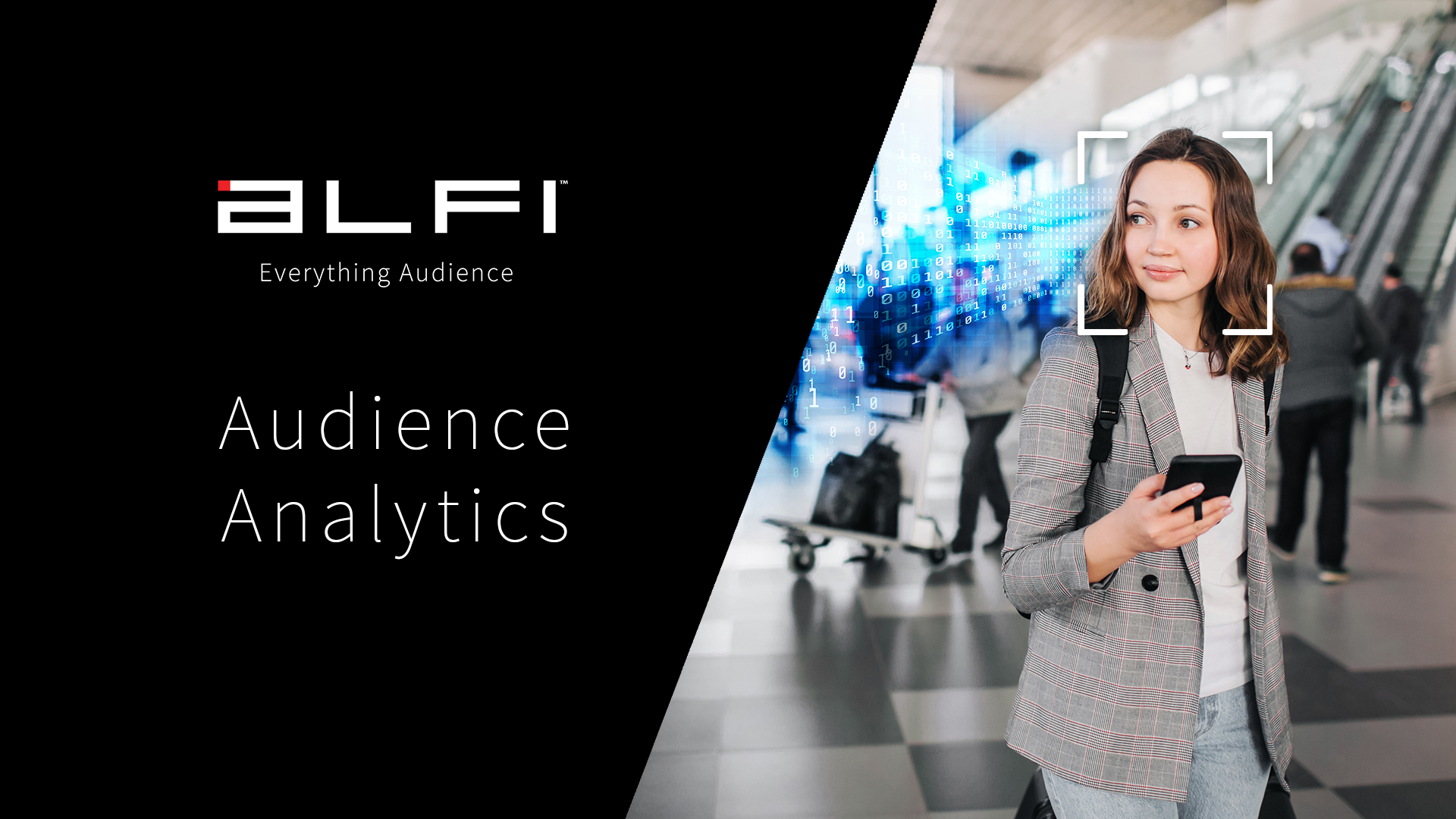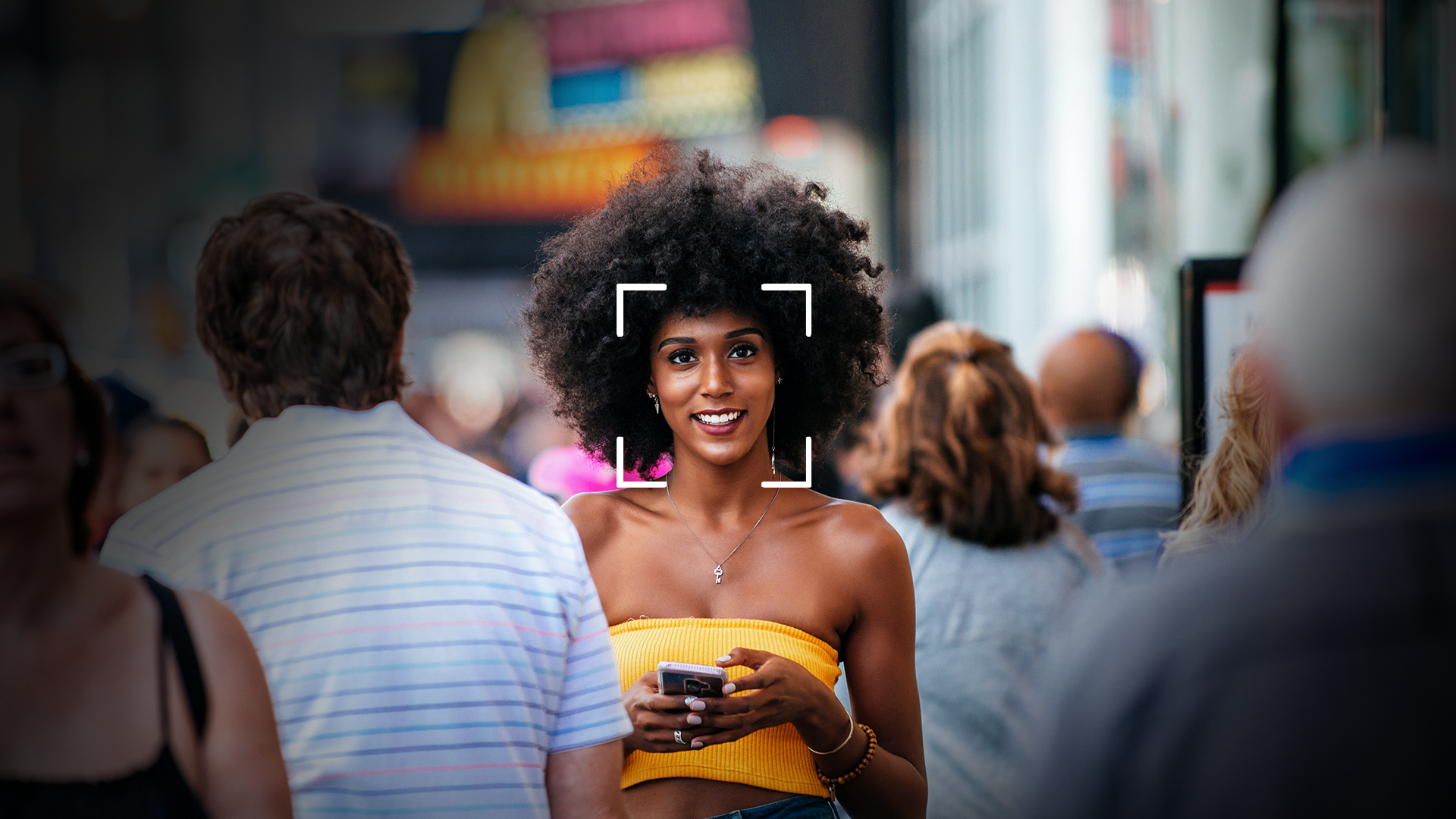With advancements in modern technology and digital screens everywhere, it’s no surprise that facial recognition is emerging as a growing trend for use in security, health, user authentication, mobile banking, and now even retail and marketing applications.
In this article, we’re going to break down everything surrounding facial recognition advertising and facial detection advertising, exploring answers to the following questions:
- What is facial recognition?
- Facial Emotion Recognition and Facial Detection
- How does facial recognition work?
- How accurate is facial recognition?
- How is facial recognition and detection being used…in advertising, billboards, rideshare vehicles, retail stores, and kiosks?
- What are the benefits of facial recognition in retail?
Globally, tech firms are in the process of researching and developing new facial recognition technologies to keep up with industry leaders – Russia, China, Japan, Israel, Europe, and the United States.
In fact, according to the MarketsandMarkets report, the facial recognition technology market is predicted to reach $7 billion by 2024, and demonstrate a CAGR of 16.6% over the period from 2019 to 2024.
This modern technology is steadily on the rise, but the pandemic accelerated this shift much more drastically with an increased demand for touchless solutions.
As long as major players like Apple and Facebook are incorporating facial recognition tech into daily use, it will just continue to expand. Even the BBC has used it to test emotional responses to its marketing content. Before we dive into the benefits of facial recognition in advertising, let’s go over what it means.
What is facial recognition?

Facial recognition is the use of biometric technology to detect and identify individuals based on their facial characteristics – i.e. eyes, eyebrows, nose, mouth, chin, ears. In order to do so, facial recognition systems integrate images, videos, or real-time footage.
Facial Emotion Recognition
Facial emotion recognition is the process of analyzing facial expressions to identify or recognize emotions on a human face – disgust, joy, anger, surprise, fear, sadness, or other compound emotions – with image processing software.
Powerful AI can detect emotions by learning the meaning of each facial expression and applying that intel to the new information presented to it. Emotional artificial intelligence, or emotion AI, is a technology capable of reading, imitating, analyzing, and responding to human facial expressions and emotions.
The term facial emotion recognition differs from facial recognition in that it does not attempt to identify the individual; it seeks to identify the emotion.
The term facial detection is also different from facial recognition, in that facial detection refers to the analyzing or detecting of patterns and emotions, whereas facial recognition technology (FRT) stores data in order to recognize or identify an individual against existing content.
Facial Emotion Detection Advertising with ALFI
Transformative AdTech company, ALFI, uses facial detection to create more targeted marketing by detecting facial emotion detection without storing any facial images – ultimately respecting user privacy.
ALFI’s advertising platform can transition between ads depending on the person who is in front of the screen. For DOOH, that’s unheard of. ALFI can be installed on any device that has an internet connection and a camera, delivering personalized content and ads to any person looking at the screen.
While ALFI’s smart technology can detect emotion and behavior, it does not use cookies or store personal data, facial images, or information. It sets new standards by providing precise targeting information to advertisers, but it does so without intruding by collecting information in non-intrusive ways compliant with GDPR, CCPA, and HIPAA.
How does facial recognition work?
Using computer algorithms, facial recognition systems with 2D or 3D sensors digitally capture the face and detect specific, geometric features and characteristics including their eyes, chin shape, skin texture, etc.
This data is converted into mathematical models and compared with other stored characteristics in a database using an algorithm. Some algorithms map the face, measuring the distances between the eyes, nose, and mouth, etc. Others map the face with more abstract features. Either way, the network provides a vector for each face – a string of numbers identifying and differentiating that person from all the others in the group.
This powerful, dynamic technology is then capable of identifying gender, facial expression, age, and the makeup of passing crowds. In fact, many companies are capable of telling a person’s age within a five-year bracket. Details can even include an onlooker’s mood. Consumer mood is very valuable to advertisers as it shows shoppers’ general feelings towards a brand, store, or campaign at different times of the day.
Facial Recognition Accuracy
Like most technology, the accuracy and effectiveness of facial recognition have drastically improved over time. According to the US National Institute of Standards and Technology (NIST), between 2014 and 2018, facial recognition systems were 20 times better at finding a match in a database of 12 million portraits. Additionally, the failure rate fell from 4% to 0.2% in the same period, making huge strides in improving accuracy.
Thales boasts that their solution which utilizes a Facial recognition software (LFIS) achieved excellent results with a face acquisition rate of 99.44% in less than 5 seconds (against an average of 68%), a Vendor True Identification Rate of 98% in less than 5 seconds compared with an average 66%, and an error rate of 1% compared with an average of 32%.
In a January 2020 report, NIST also demonstrated that the best facial recognition algorithms have no racial or sex bias. That being said, the true test of facial recognition depends on the conditions involved – clear visual quality, bad lighting, added scarves and masks, and other variables. There are often issues differentiating between twins and there is much improvement to be done in reading darker skin tones.* But even recent data factors like determining a viewer’s mood are already showing a lot of success at 80% accuracy.
How are companies using facial recognition?
In many countries today, facial recognition systems are used for maintaining security and verifying identities. The use of these systems in other sectors has increased along with the need for contactless delivery during COVID-19. For instance, many healthcare systems worldwide adopted thermal camera checks. Some airports are using it for the process of attendance tracking and monitoring immigration.
As time goes on, expect even more uses for facial recognition software to pop up including biometric sign-ins, travel and public security measures, educational platforms, and others.
Fingerprint scanners and other methods requiring physical contact are slowly falling to the wayside and being replaced by contactless tech. iPhone X owners (and more recent versions) already have the option of using facial recognition technology to unlock their devices, log in to apps and sites, and even securely make purchases. Facebook uses facial recognition software that allows users to auto-tag photos on their timeline.
Target, 7-Eleven, Walmart, and Google have all been toying with different forms of facial recognition for some time now.
In China, the world’s leader in facial recognition, there are currently more than 176 million CCTV cameras, including street surveillance and policing. The latest developments include cashless stores, where consumers can purchase items simply by scanning their faces. In hotels and at ATMs, users can conveniently check in or withdraw funds with a simple glance.
For marketers, brands, and businesses, facial detection and facial recognition represent major opportunities for expanding reach, building customer loyalty, and driving conversions.
Facial Recognition in Advertising

Beyond essential businesses and security measures, facial recognition is now being used in retail stores and even advertising campaigns. The BBC used software from CrowdEmotion to measure the conscious and subconscious emotional responses to content marketing campaigns delivered via BBC.com. Its test of 5,000 people used webcams that recorded responses, dividing them into six potential emotions: sadness, puzzlement, happiness, fear, rejection, and surprise.
According to Richard Pattinson, head of BBC StoryWorks, “Audience appreciation indexes have been bread and butter for broadcasters for decades for testing response to their shows, but it’s a newer area for brands. It can give us more metrics beyond the usual dwell time and page views.”
This valuable insight into consumer behavior can help advertisers optimize marketing campaigns, deliver an enhanced user experience, improve pain points, and more. Let’s go over some of the benefits.
Benefits of Facial Recognition in Advertising
At its most basic level, facial recognition offers advertisers an unfiltered look at the emotions and reactions of consumers. This provides a unique opportunity to gain valuable insight and build stronger relationships with customers in a scalable way.
The times of focus groups and customer surveys are beginning to fade; forced, biased responses often resulted in less accurate results. Facial recognition advertising provides upfront analysis scaled inexpensively, capturing a participant’s unbiased and unreserved emotional reactions in a noninvasive manner. By studying these raw emotional dimensions, brands can better understand and connect with consumers emotionally.
Additionally, such vital feedback can help brands refocus and strategize their campaigns, optimizing their messaging and content, and even conducting A/B tests to hone and compare performance to other brands.
Understanding facial reactions to your content can help you decide which emotions the marketing team should emphasize in your campaigns. The resulting data yields a wealth of useful intel, giving companies an idea of which content drives which actions: i.e., what causes people to share on social media, make a purchase, and so on.
With mobile and other evolving devices in the Internet of Things (IoT), the entire process is far more streamlined, accessible, portable, and most importantly, connected. If brands focus on building those connections, they can create a unique user experience and set themselves apart from the competition.
Facial Recognition Advertising Billboards
The sky’s the limit for facial recognition advertising. Advances in AdTech mean that companies can choose the right ad space from diverse cutting edge options that now feature added smart capabilities.
Meet the interactive billboard. Some billboard setups feature cameras built into the unit itself, while others have cameras set up in nearby areas or shopping centers. These large-scale ad spaces can be outfitted with powerful, dynamic technology capable of identifying gender, facial expression, age, and the makeup of passing crowds.
After detection and analysis, the billboard has the ability to produce programmed responses, content, or videos that change depending on the gender, age, and mood of a pedestrian, for example.
While the cameras can be used to gather valuable information for tailoring marketing campaigns, they can also be used for interactive advertising.
Some agencies have even added interactive games for onlookers, using different campaigns that might include participating in a staring contest, performing a silly gesture, or dancing along with the content. The ad reacts according to the interactions and changes accordingly. Just think of how engaging this kind of ad can be when marketing to families with crowds and small children.
In Stockholm, Sweden, Reebok’s interactive billboard challenged passers-by to run past it as quickly as they could, offering a free pair of shoes if they could beat a certain MPH pace. You can imagine the attention this generated.
This technology is becoming more popular around the globe. More than 50 screens with FRT were found across the UK, according to the Sunday Times. More than 1,600 billboards have been installed into 41 Westfield centres across Australia and New Zealand – using anonymous facial detection, not facial recognition technology.
French company Quividi, which sells facial detection technology, says that images of shoppers are processed in milliseconds and then permanently deleted. Reps also claimed that their software could detect but couldn’t recognize a particular person. For instance, if a person were to go outside of the camera’s sight window and then come back, they would be analyzed as a new person. Quividi says their billboards can distinguish shoppers’ gender with 90% precision, log responses within five categories of mood from “very happy to very unhappy” and detect customers’ age within a five-year bracket.
According to Tim Bleakley, Chief Executive at Ocean Outdoor: ‘We can measure the level of happiness or sadness. We can measure the dwell time’. Ocean Outdoor has expanded its recognition technology to include the analysis of vehicles so companies can tailor adverts based on drivers, for instance, marketing premium products to people driving expensive cars.
The devices comply with data protection laws as none of the information gathered about customers can be stored so shoppers don’t need to give consent to being filmed.
The possibilities for billboards are endless. Dynamic content and contextual advertising can transform what once was a static ad space into a show-stopping topic of conversation.
Facial Emotion Detection in Rideshare Cars
While billboards are a powerful streetside and sidewalk-facing tool to engage pedestrians and drivers, they are limited and stationary, while rideshare vehicles can take your brand’s message on the go.
Some innovative companies like ALFI have even installed interactive tablets in rideshare cars that employ facial emotion detection technology. As popular as smartphones and touchscreens are, it’s no wonder that interactive tablets are quickly becoming the most popular way to deliver rideshare ads to passengers.
These tablets host cameras that scan viewer faces to estimate the gender, age, and even mood of the passenger. As the companies do not store this data anywhere, it maintains user privacy by scanning and approximating consumer data. Additionally, smart tech can understand external factors like the vehicle’s geographical location, displaying local history, restaurants, and even nearby sales.
With the intel generated, the tablet then is able to tailor the appropriate content and advertisements relevant to that passenger. By keeping content meaningful for consumers, this process can benefit both the user and the advertiser. Once installed in the vehicle, the tablet provides curated entertainment and ads for an enhanced rider experience. Entertainment options might include games, news, movie trailers, and more.
Interactive tablets generally target people with either location-based interactive tablets and/or machine-learning tablets. Location-based interactive tablets deliver ads based on the location of the vehicle. If the driver is delivering a passenger to a designated shopping area, the ads could then be related to promotions specific to retail stores in that locale. If the driver heads towards a residential area, food delivery ads might pop up to pique the interest of potentially hungry passengers.
Other tablets employ powerful machine learning to determine more information about who is riding in the vehicle. Marketing ads are then targeted based on actual passenger info rather than by location. These ads can be chosen based on age, gender, mood, and more. Ads powered by machine learning are much more targeted – and can be far more effective – than location-based ads.
Powerful AdTech company, ALFI uses computer vision and machine-learning models to detect the demographics of the person looking at the tablet screen and then deliver personalized content along with advertisements. Delivering relevant, strategic content results in higher than industry average click-through rates and better return on investment for advertisers.
Facial Recognition in Retail Stores

As more and more people get back out into retail stores, restaurants, essential stores, and other brick-and-mortar locations, there will be more opportunities to feature ad spaces for connecting with consumers within these physical settings.
Brands can now address and analyze shopper behavior to improve the purchase process, better tailor content, and provide an enhanced shopping experience for all involved.
Restaurant chains are getting in on the facial recognition game too. Since 2017, KFC has been testing a face recognition payment solution in its Hangzhou, China locations. A spokesperson for KFC said: “The artificial intelligence-enabled system can recommend menu items based on a customer’s estimated age and mood,” according to the Guardian.
Does a selfie payment solution seem far-fetched? According to an American Express Global Customer Service study, customers have to wait for 15 minutes on average before they get served. Think hungry or impatient guests won’t speed up the process? Think again.
Consider how easily things can be accessed and purchases can be made via the iPhone’s Face ID feature.
Megachain Walgreens has found its way in too. By integrating facial detection technology to improve its customer experience with embedded cameras, proximity sensors, and digital screens near their cooler doors, they are combining the freshness of digital power with the benefits of brick-and-mortar.
These smart cooler displays are reported to detect age, gender, and emotional responses. Besides offering the opportunity to truly highlight the best angles, footage, and marketing of a product, they can also detect external variables like weather, temperature, the length of time a viewer has been standing in front of a display, and so on.
Using this valuable intel paired with proximity sensors, the cooler ad spaces then display appropriate advertisements of products they predict a customer would want to see – a refreshing beverage on a hot summer day, for example.
All of this provides rich, real-time analytics. Advertisers can track which items are picked up and reviewed, updating stock information and sending it to retailers. Based on dynamic selections – if you choose a frozen pizza or appear to exhibit a certain mood, for instance – the ad space can then display product cross-sells and pairings appropriate to those choices – an ad for a crisp, cold soda.
Reportedly, Walgreens does not store any of its unique data – it only keeps anonymous metadata describing the overall size and demographics and not individual information – using detection purely for understanding consumer behavior.
Many other retail stores are using facial recognition, including that of facial recognition kiosks.
Facial Recognition Kiosks
Thanks to innovative technology, digital signage can catch consumers’ attention and deliver messages that will improve the overall experience and interaction with a specific brand. Consider this – up to 80% of shoppers claim to have decided to visit a shop because they got lured in by digital signage.
Now imagine how much-tailored content will resonate with engaged onlookers.
Facial recognition kiosks can help in many ways, providing more tailored content or even easing processes like making a purchase. Some brands are even experimenting with involving personalized fashion with a project called FashionAI, that adds FRT into changing room mirrors, allowing customers to see themselves in outfits without actually having to put them on.
Shoppers from retail stores can even complete purchases by presenting their faces at tablet-like devices or at kiosks. It is easier, faster, accurate and most importantly secure.
A California restaurant chain, CaliBurger has installed smart kiosks with face recognition technology. When customers scan their face with FRT, the kiosk screen displays their loyalty program with past and frequent purchases, speeding up the ordering process and more.
Past purchase information collected from consumers allows retailers to send enhanced email, push notifications, and SMS messages featuring tailored promotions.
Benefits of Facial Recognition in Retail
Facial recognition advertising can play a role in boosting overall sales. It can contribute to purchasing decisions, increase dwell time in the store, entertain customers, and provide more context for products and services.
Placing digital ad spaces strategically throughout the store can be incredibly advantageous to your bottom line. Over 40% of shoppers say that digital displays can change what they buy because relevant information is served close to the point of purchase, according to ScreenCloud.
Pairing digital tech with facial detection and FRT in retail means that these ads can target the right people in the right locations – often near points of purchase – and be even more personalized, resulting in a better experience for customers and better insight for advertisers.
They are a profitable way to increase the visibility of key products in specific target areas throughout the store, promoting your best sellers and time-sensitive offers that increase urgency and can be updated instantly across multiple store locations.
Facial detection and FRT allow brands to tailor content and feature product ads based on mood, weather, age, and more. Knowing the gender and age of viewers allows brands to introduce products with less risk and more predictable results. Identifying consumer moods can enhance that even more so. Plus, personalizing content generates more profit.
With facial recognition advertising, advertisers can track product purchases and retailers can reward repeat purchases, better building customer loyalty programs and brand validation. Plus, you can show repeat customers what they like, and even what they might like. Knowing typical spending habits also makes upselling and cross-selling far easier.
Once you know your typical customers’ spending habits, you can connect certain products with target personas and better guide your marketing strategy and content.
For more information on digital signage solutions in retail stores, check out this article.
ALFI
Want to experience the next step in AdTech? ALFI’s platform pairs powerful computer vision with AI and machine learning models to display clients’ ads only to their target customers when they’re most susceptible to making buying decisions.
Other AdTech platforms may blur the line when it comes to user privacy and data storage, but ALFI is transforming the future of DOOH advertising by crafting tools that empower media buyers to reach their exact target market, at the right time, for a fraction of the cost in a respectful and ethical manner.
With ALFI, it’s possible – and even easy – to target users, master AdTech, and generate revenue ethically while respecting the right to privacy.
Want to know more? Drop us a line and our team will get in touch with you!
* Alfi is not deploying facial recognition or detection related to ethnicity nor any variation therein, including skin tones.




